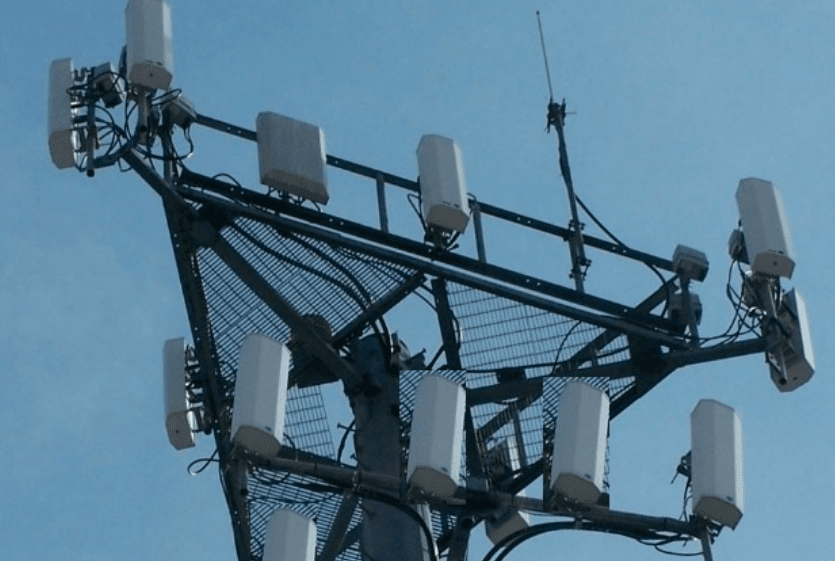Cellular service expanded on Highway 3, but not Kootenay-Boundary stretch
One month after two local regional districts were denied the creation of cellular service along a stretch of Highway 3 in the Kootenay-Boundary, the province expanded service on the same highway but from Hope to Keremeos.
In early February theB.C. Ministry of Public Safety and Solicitor General denied a combined Central Kootenay and Kootenay-Boundary regional district ask for an increase in cellular infrastructure — towers and, thus, service — along the full length of the Highway 3 corridor.
In a letter to the regional district boards, the directors were told to look to the service providers for answers, not the province.
But the province stepped up when it came to the other section of Highway 3. According to the Ministry of Citizens’ Services, it continues to “work with service providers to identify highway segments that are without coverage, and find solutions to increase cellular coverage throughout the province.”
But projects to expand cellular service require service providers to come forward to build the required infrastructure, and maintain service, the spokesperson said.
“This Hope-to-Keremeos Highway 3 project is viable for a cellular provider as there is available power — a critical component required by cell towers,” the ministry stated.
Stretches of the Kootenay-Boundary section of Highway 3 do not have power, which makes installing cellular services more challenging.
With the prospect of increased traffic along Highway 3 the two local regional districts had asked the province to address the lack of infrastructure along the roadway, requesting cell service and towers to be added to the full length of the Highway 3 corridor “to facilitate the safety of travelers and first responders.”
Available to service providers is the Connecting British Columbia program, administered by Northern Development Initiative Trust, which supports connectivity expansion projects by reducing the initial cost to establish cellular services and contribute to the overall cost of the project.
However, the program is application-based, and funding is granted based on applications received from service providers.
No takers
In a letter to RDKB chair Linda Worley, assistant Deputy Minister of the Connectivity Division, Susan Stanford, said telecommunications were federally regulated in Canada by the Canadian Radio-television and Telecommunications Commission.
“While the province cannot instruct service providers as to when and where they make their investments, we support the expansion of connectivity through the Connecting British Columbia program which is administered by Northern Development Initiative Trust,” she wrote in her letter.
She said the three service providers that invest in cellular networks in the province — TELUS, Rogers and Shaw — might have projects planned for the area and could include cellular along Highway 3, or had projects that could be expanded to include cellular in needed corridors.
“We would encourage you to connect directly with service providers to see if any projects are planned for areas near or on Highways 3 and 33,” Stanford wrote. “The Connecting British Columbia program is currently open to applications that expand cellular service.”
The regional districts noted that cell service carriers have access to “cellular on wheels” (COW) units that could be deployed to fulfill the request.
A look back
With the indefinite closures of Highway 1 and Highway 5 — due to the events of Nov. 14 — the province declared Highway 3 would be the main corridor for transport to and from the Lower Mainland, but with an expected 525 per cent increase in traffic.
As a result, there is major lack of infrastructure to support the increase in traffic with cellular tower sites along Highway 3, the Paulson Summit and Highway 33.
From Hope to Keremeos
The announced project will expand cellular coverage along an estimated 92 kilometres of Highway 3 by adding 11 new cell towers between Hope and Keremeos.
Cellular coverage along this section of Highway 3 has been classified as intermittent, with coverage gaps between Hope and Manning Park and between Princeton and Keremeos presenting the greatest challenge.
The province is investing as much as $3.1 million through the Connecting British Columbia grant program. This grant, administered through the Northern Development Initiative Trust (NDIT), will supplement the $9.7 million cost of the project, with the remainder provided by cellular service provider Rogers Communications Canada Inc.
The project is expected to be complete by fall 2024.


























